Microsoft's refresh of the Surface lineup includes the Surface Go 3 as Windows alternative to Apple's iPad. Here's how it stacks up against Apple's least expensive iPad and the iPad Air.
Microsoft's launch largely centered around the Surface Pro 8 and the Surface Laptop Studio, as well as the dual-screened Surface Duo 2. As part of the new lineup, Microsoft also introduced the Surface Go 3, a value-oriented tablet with a 60% faster processor than previous models.
The low starting price tag an Microsoft's positioning of it as an ideal family tablet puts the Surface Go 3 in the same territory as Apple's iPad range.
In this comparison, we will be looking at the Surface Go 3 and seeing how it compares to the just-updated iPad, as well as the iPad Air.
Specifications
| Surface Go 3 | iPad (2021) | iPad Air (2020) | |
|---|---|---|---|
| Base price | $399.99 | $329 | $599 |
| Screen Size (inches) | 10.5 | 10.2 | 10.9 |
| Resolution | 1,920 x 1,280 | 2,160 x 1,620 | 2,360 x 1,640 |
| Pixel Density (dpi) | 220 | 264 | 264 |
| Display type | Pixelsense, 3:2 Aspect Ratio | Retina LED IPS sRGB True Tone | Liquid Retina LED IPS Fully-laminated Wide Color (P3) True Tone |
| Processor | Dual-core Pentium Gold 6500Y, Dual-core 10th-gen Core i3-10100Y | A13 Bionic | A14 Bionic |
| Graphics | Intel UHD Graphics 615 | A13 Bionic | A14 Bionic |
| Memory | 4GB, 8GB LPDDR3 | 3GB | 4GB |
| Stylus Support | Microsoft Pen Protocol support | Apple Pencil (First Generation) | Apple Pencil (Second Generation) |
| Dimensions (inches) | 9.65 x 6.9 x 0.33 | 9.8 x 6.8 x 0.29 | 9.74 x 7.02 x 0.24 |
| Weight (lbs) | 1.2 | 1.07 | 1.0 |
| Capacities | 64GB eMMC, 128GB SSD | 64GB, 256GB | 64GB, 256GB |
| Rear camera | 8MP | 8MP Wide f/2.4 | 12MP Wide f/1.8 |
| Front camera | 5MP | 12MP Ultra Wide f/2.4 | 7MP FaceTime HD f/2.2 |
| Video recording | 4K (rear), 1080p (front) | 1080p at 25/30fps (rear), 1080p (front) | 4K at 24/30/60fps (rear), 1080p (front) |
| Biometric | Windows Hello | Touch ID | Touch ID |
| Battery Life | 11 hours | 10 hours | 10 Hours |
| Speakers and Mics | 2W stereo with Dolby Atmos, Dual far-field studio mics | 2 speaker audio Dual microphones | 2 speaker audio Landscape Mode, Dual microphones |
| Wireless Connectivity | Wi-Fi 6, Bluetooth 5.0 LTE Cellular on the way | 802.11ac Wi-Fi Bluetooth 4.2 LTE Cellular | Wi-Fi 6, Bluetooth 5.0 LTE Cellular |
| Ports | USB-C 3.5mm headphone jack Surface Connect port Surface Type Cover port | Lightning, Smart Connector | USB-C, Smart Connector |
Surface Go 3 vs iPad vs iPad Air - Physical dimensions
The Surface Go 3 is a reasonably comparable tablet to the iPads, in terms of size at least. The tablet measures 9.65 inches long and 6.9 inches wide.
This makes it shorter but wider than the iPad, which is 9.8 inches by 6.8 inches, as well as having less of a footprint than the 9.74-by-7.02-inch iPad Air.
The iPad Air fares the best on thickness at 0.24 inches, with the iPad a little thicker at 0.29 inches. The Surface Go 3 is the thickest, at 0.33 inches.
 The Surface Go 3 has roughly the same footprint as an iPad or iPad Air, but with a lot more thickness.
The Surface Go 3 has roughly the same footprint as an iPad or iPad Air, but with a lot more thickness. The thickness also correlates with the weight, 1 pound for the iPad Air, 1.07 pounds for the iPad, and 1.2 for the Surface. While this is a fairly hefty jump for the Surface, it's not a massively significant one to put people off.
The extra thickness and weight could probably be explained a bit by the inclusion of the Surface line's signature Kickstand, which flaps out when required. Microsoft could certainly save some weight by removing the feature, but that would only push off stand duties to an accessory.
Surface Go 3 vs iPad vs iPad Air - Display
The closeness in footprint could probably be attributed to Microsoft's decision to equip the Surface Go 3 with a 10.5-inch display. This puts the Surface between the 10.2-inch iPad and the 10.9-inch iPad Air.
While the size is in the same ballpark, the resolution certainly isn't.
Microsoft put its Pixelsense 1,920 by 1,280-resolution display in the latest model. This, combined with the size, gives it a pixel density of just 220.
This doesn't sound low, until you realize that the iPad sports a 2,160 by 1,620 resolution, and the iPad Air is 2,360 by 1,640. This also means that the iPads have higher pixel densities than the Surface Go 3, at 264 for both models.
Of course, there are some differences between the iPad and iPad Air displays, such as the iPad using a Retina IPS screen with sRGB while the iPad Air's Liquid Retina IPS display is fully-laminated with P3 Wide Color support.
But ultimately, the Pixelsense screen in the Surface Go 3 is way behind Apple's tablets, even one that's a year old.
Surface Go 3 vs iPad vs iPad Air - Performance
The iPad and iPad Air benefit from Apple's self-designed chips, with the iPad using the A13 Bionic while the iPad Air uses the A14 Bionic. They are both six-core chips, with two performance cores accompanied by four efficiency cores, while the GPU is an Apple-designed four-core version.
Naturally, the A14 Bionic's version offers higher performance than the A13.
Apple also has the Neural Engine in eight-core and 16-core variants, respectively, which helps with machine learning tasks.
The Surface Go 3 continues to use Intel chips, with the dual-core Pentium Gold 6500Y clocked at 1.1GHz and 3.4GHz under Turbo accompanied by the upgrade option of the tenth-generation Core i3-10100Y, a dual-core 1.3Ghz chip with a 3.9GHz Turbo.
In both cases, the Surface Go 3 uses Intel UHD Graphics 615 as the integrated GPU.
On the memory side, the iPad is equipped with 3GB, while the iPad Air has 4GB. The Surface Go 3 starts with 4GB, but can be configured to 8GB, which may help it with multitasking with some memory-hungry applications.
In terms of benchmarks, we turn to Geekbench and a little guestimation, since there are no benchmark results released for the Surface Go 3.
Geekbench has results for the Core i3-10100, but while there are listings for the Pentium Gold G6500, there aren't results for the G6500Y, so the nearest configuration will be used instead.
The A13 in the iPad manages to score 1,310 points for the single-core test, and 3,302 for the multi-core version, when AppleInsider tested its on-hand unit. The iPad Air's A14 does better on both fronts, with 1,584 and 4,205.
The Core i3-10100 isn't quite as good as Apple's chips in the single-core test, managing 1,096, but the multi-core result leans closer to the A14 with 3,998.
The Pentium Gold G6500 results place the single-core performance at around 1,000 on average, while multi-core is about 2,000. While not exact, it's plain to see the chip's nowhere near the rest in terms of performance, which makes sense considering the Core i3 is supposed to be the upgraded version.
On to graphics and GeekBench's Metal benchmarks, the A13 GPU scores 6,956 points and the A14 manages to hit 8,977.
The story doesn't get any better for the Surface, as its selected integrated GPU gets to just 3,512 points, nowhere near the A13, let alone the A14.
What does this mean? At best, Microsoft's higher-tier chip choice is a bit better than the A13 in multi-core tests, but in practically everything else, the iPads offer far better performance.
Surface Go 3 vs iPad vs iPad Air - Cameras
Apple has a pedigree for mobile photography in its iPhone lineup that it also tries to stretch over to the iPad range. While not as important on the iPad side, it's still something that Microsoft has to contend with if it wants its tablets to succeed.
On the back, the iPad uses an 8-megapixel wide-angle camera, with an aperture of f/2.4, a 5x digital zoom, and HDR support. The iPad Air opts for a better 12-megapixel snapper, complete with an improved f/1.8 aperture, along with a 5x digital zoom and Smart HDR 3.
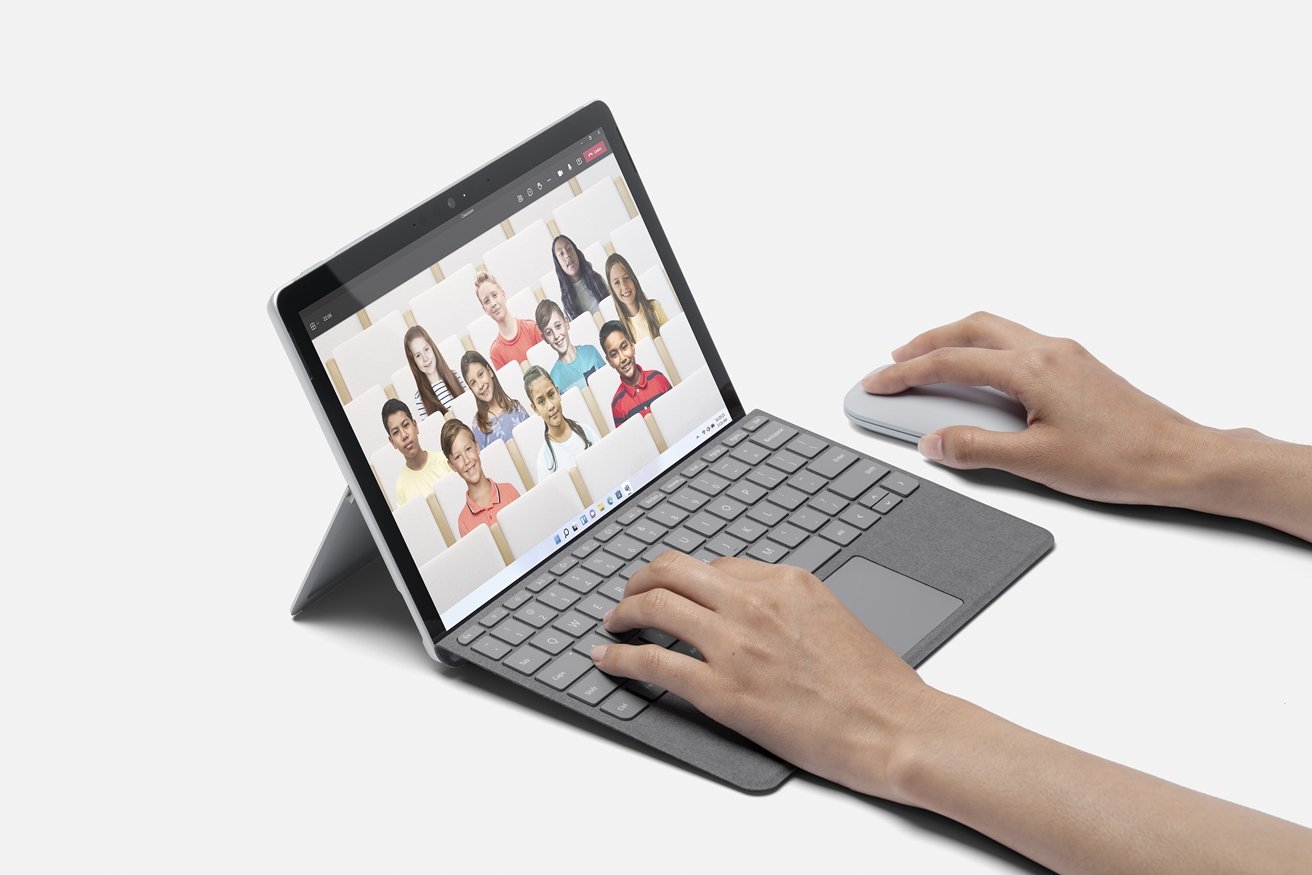 The cameras aren't mind-blowing on the Surface Go 3, but they will certainly work for video conferencing.
The cameras aren't mind-blowing on the Surface Go 3, but they will certainly work for video conferencing. Microsoft advises the rear camera of the Surface Go 3 is an 8-megapixel version, though with no information on zoom or aperture. Microsoft says that it can record 4K video, which beats the iPad's 1080p video and equals the 4K capabilities of the iPad Air.
Around the front, the Surface Go 3 uses a 5-megapixel camera, which is behind the 7-megapixel FaceTime HD of the iPad Air, and the new 12-megapixel Ultra Wide camera of the Center Stage-enabled iPad.
All front-facing cameras have 1080p video, with the tablets also serviced by dual microphones for audio pickup.
The cameras are an area that Microsoft could've caught up to Apple with, but again it falls slightly behind the curve.
The one area that the Surface Go 3 does do better camera-wise is the inclusion of Windows Hello biometrics, whereas the iPads aren't equipped with the Face ID of the iPad Pro models.
Given all other factors it's not a massive boost to Microsoft, but it's something at least.
Surface Go 3 vs iPad vs iPad Air - Storage, Connectivity and Power
For storage, the Surface Go 3 is offered in two capacities, with 64GB eMMC as the base and a 128GB SSD as the higher-tier option. Apple matches Microsoft for the lower-tier 64GB option for both iPads, while the upper-tier version is 256GB.
On the connectivity side, the Surface Go 3 and iPad Air both use Wi-Fi 6 and Bluetooth 5.0, meanwhile the iPad uses 802.11ac and Bluetooth 4.2. This may not necessarily be that important for users of value-based tablets compared to premium tablet users, but it's a slight difference worth knowing about.
Both the iPad and iPad Air offer LTE cellular connectivity as an optional extra. At launch the Surface Go 3 won't have that option, but it will do in the future.
For physical connectivity, the Surface Go 3 has USB-C, a headphone jack, Surface Connect Port, and a Surface Type Cover port, with the latter two used to connect the tablet to specially-made accessories.
The iPad and iPad Air both use a Smart Connector, which it uses to connect to covers and keyboard accessories in a similar way. While the iPad Air uses USB-C, the iPad continues to use Lightning, which could be viewed as less useful to users if they are using external drives and other accessories.
In terms of power, the iPad and iPad Air are said by Apple to offer up to 10 hours of web-surfing on Wi-Fi using the built-in 32.4Wh battery in the iPad, 28.6Wh for the iPad Air.
Microsoft claims the Surface Go 3 offers "up to 11 hours of typical device usage" with its 28Wh battery. This is defined as a full battery discharge combining "active use and modern standby," including the use of a browser with eight tabs open, Microsoft's Office suite being used, and "a portion of time with the device in use with idle applications."
We don't know how that stacks up against iPad usage on a like-for-like basis, but it's probably in the same ballpark as the iPads for battery life.
Surface Go 3 vs iPad vs iPad Air - Other Details
Biometric security is handled by Windows Hello on the Surface Go 3, using that front-facing webcam. The iPad and iPad Air both use Touch ID for security.
Stylus support is offered on all three devices, with the iPad working with the first-generation Apple Pencil, the iPad Air with the second-generation Apple Pencil, and the Surface Go 3 having support for the "Microsoft Pen Protocol." This means it works with any stylus with MPP support, but realistically that's covering Microsoft's Surface Pen line.
Both ecosystems have various keyboard covers and accessories, such as the Smart Keyboard Folio for the iPad Air and the Smart Keyboard for iPad. Microsoft offers the Surface Go Type Cover, but it also works with items like the Microsoft Arc Mouse too.
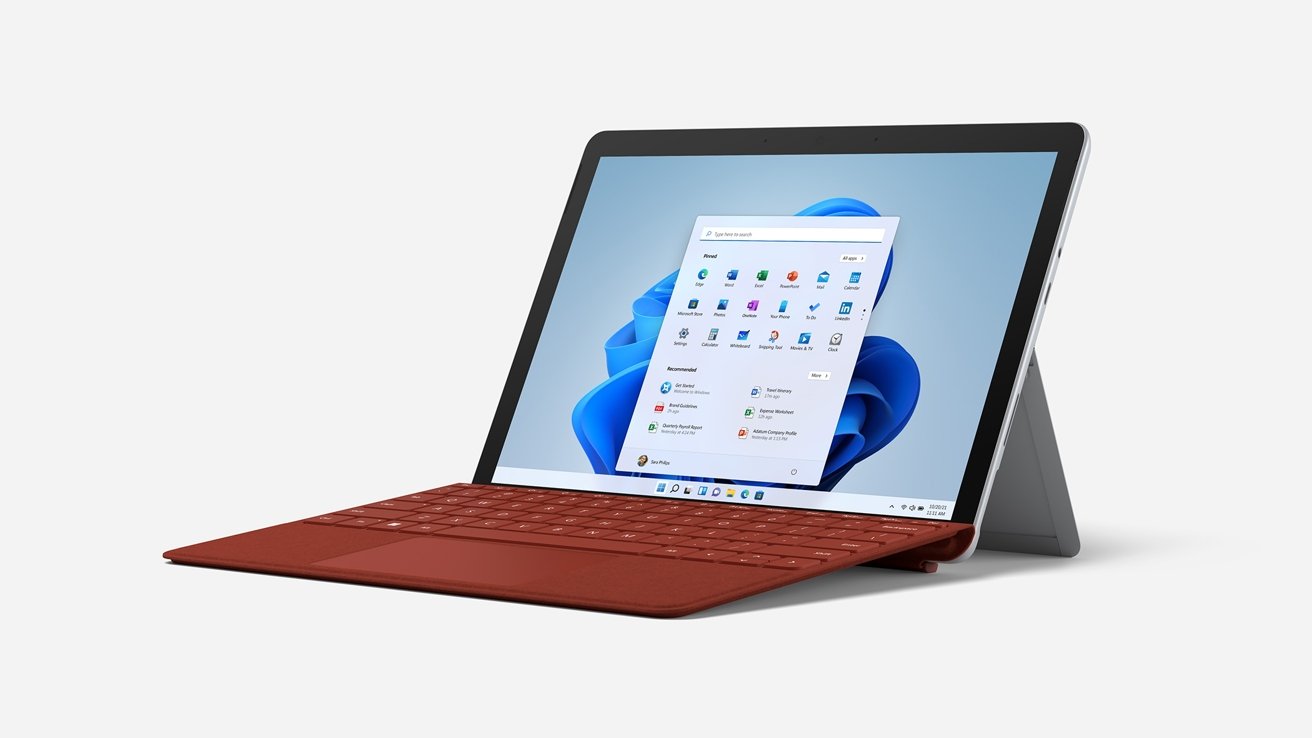 A keyboard cover is a logical accessory to acquire, but you will have to buy them separately, regardless of whether you go Surface or iPad.
A keyboard cover is a logical accessory to acquire, but you will have to buy them separately, regardless of whether you go Surface or iPad. Naturally, all of these accessories are available as separate purchases to the tablets themselves.
Microsoft is the most restrained of the two companies when it comes to coloring, as it doesn't offer any color options for the Surface Go 3. Meanwhile, Apple offers two options for the iPad and five for the iPad Air.
Surface Go 3 vs iPad vs iPad Air - Configuration Pricing
Apple offers the iPad with four distinct prices, covering two capacities and whether or not you want cellular connectivity. The Wi-Fi-only model is $329 for 64GB of storage, $479 for 256GB, with the cellular versions at $459 and $609 respectively.
It's the same story for the iPad Air, with the Wi-Fi model priced at $599 for 64GB of storage, $749 for 256GB. If you add LTE connectivity, the 64GB model costs $729, or $879 for the 256GB version.
While Microsoft usually opts for more configuration options for its products than Apple tends to provide, it's instead restrained the selection to just three configurations for the Surface Go 3. This is pretty much down to not giving the option for LTE connectivity at launch.
The Pentium model with 4GB of memory and the 64GB of storage is $399.99, while upgrading to 8GB of memory and 128GB of storage brings the cost to $549. The Core i3 version is only available in one configuration, with 8GB of RAM and a 128GB SSD for $629.
Not a great iPad alternative
It's plain to see that Microsoft's attempt to beat Apple in the cheap tablet arena is not really a success. While it gets the sizing right, it falls behind Apple's tablets in many areas, including performance, the cameras, the display resolution, and in not offering LTE connectivity at launch.
Since many people immediately think of the iPad as the default tablet to get, Microsoft has to pull out a tablet that outshines the iPad, while still providing value. With the Surface Go 3, Microsoft doesn't manage to keep pace.
At the value-end of the range, Microsoft offers the lesser tablet, yet still charges $80 more, making it 21% more expensive than the basic iPad.
Looking to the premium side, Microsoft's Core i3 version is just $30 more expensive than the cheapest iPad Air, but also $120 more affordable than the most costly non-LTE model. The problem here is that rather than saving money by getting the premium Surface Go 3, you could afford an iPad with twice the storage and largely better performance, and save $150 in the process.
If you absolutely need to have a Windows-based tablet, there's nothing wrong with getting the Surface Go 3. Just remember that if you want some form of tablet and you aren't bound by Windows software — of the three, you'll get more for your money by getting one of Apple's slates.
 Malcolm Owen
Malcolm Owen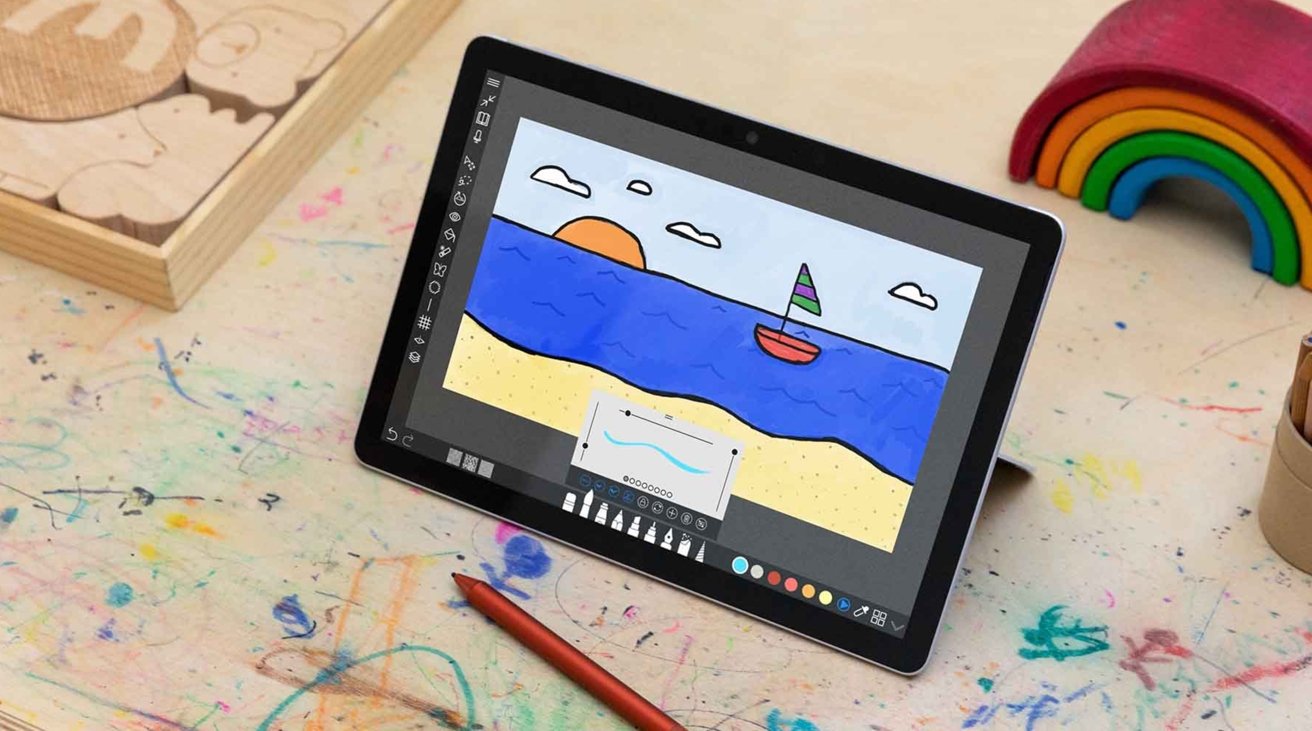
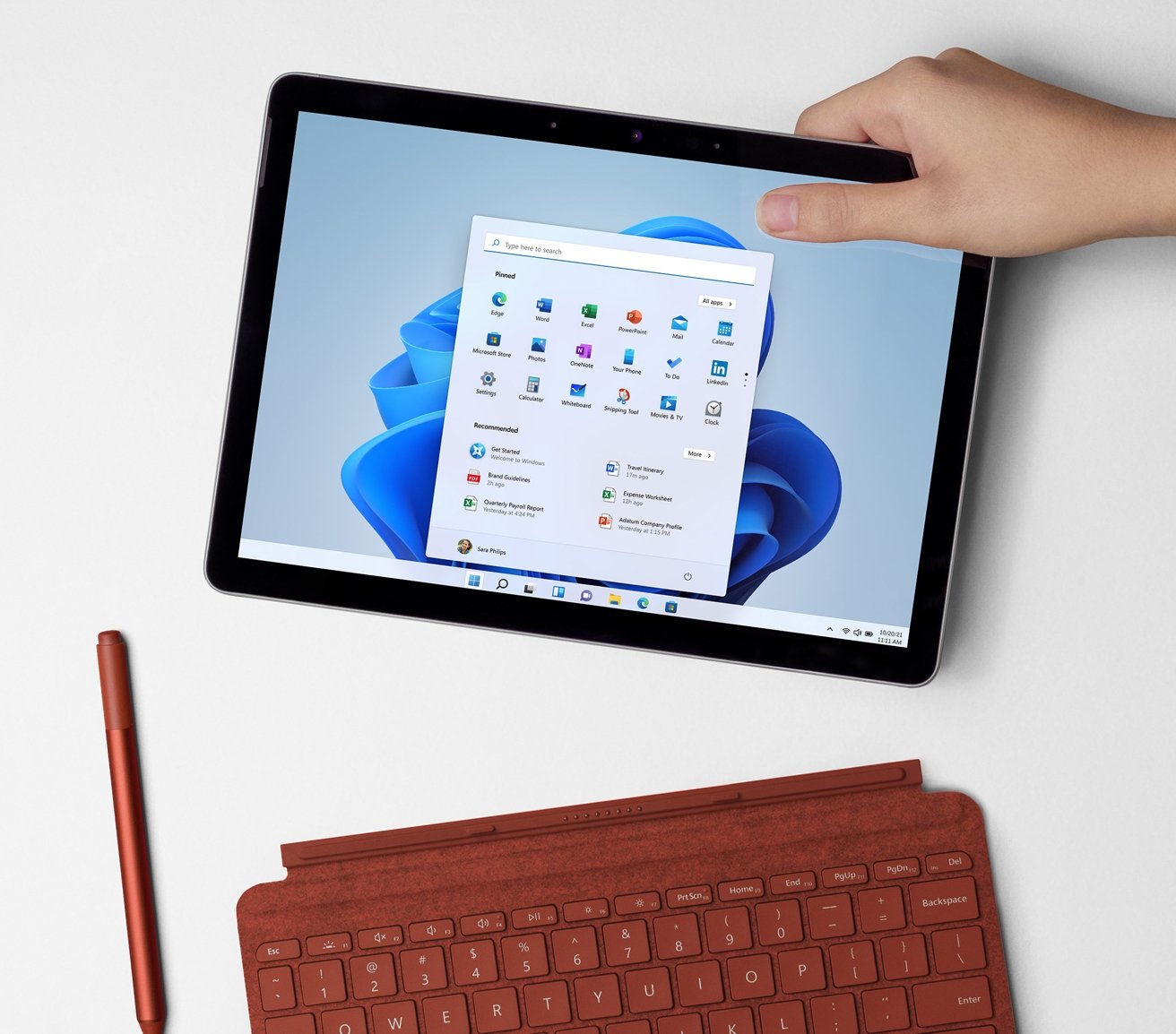







-m.jpg)







 William Gallagher
William Gallagher

 Wesley Hilliard
Wesley Hilliard



 Christine McKee
Christine McKee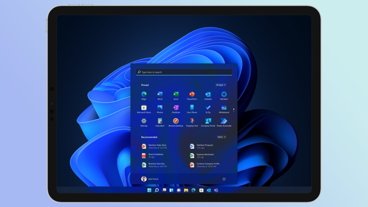
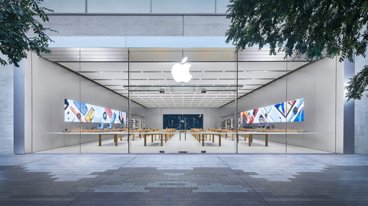



-m.jpg)




4 Comments
That specification table… did anyone bother to proof the format/structure once it was published?
Terrible comparison article! I liked that it did a good job of describing the pros of owning an iPad or iPad air but it did a God awful job at describing the surface Go 3 accurately!
For people who aren't rich and need a productivity machine that's more widely accepted as a laptop/tablet hybrid the Go 3 with i3 is very hard to beat - 8GB RAM, microsd expansion for storage, windows 11, kickstand, & usb-c (think about it if usb-c isn't better why do so many computers and tablets - including macs and iPad- now use this format) oh there's a analog headphone jack which some ppl still use. How is this device not superior to the standard iPad???
The iPad Air is truly beautiful and pretty powerful but you pay for that bump in esthetics and performance. I think iPad air should be compared only to the i3 version of the Go 3 or perhaps to the Surface Pro 7 (i5, 8GB RAM, 256 ssd) can be purchased for $699 today!